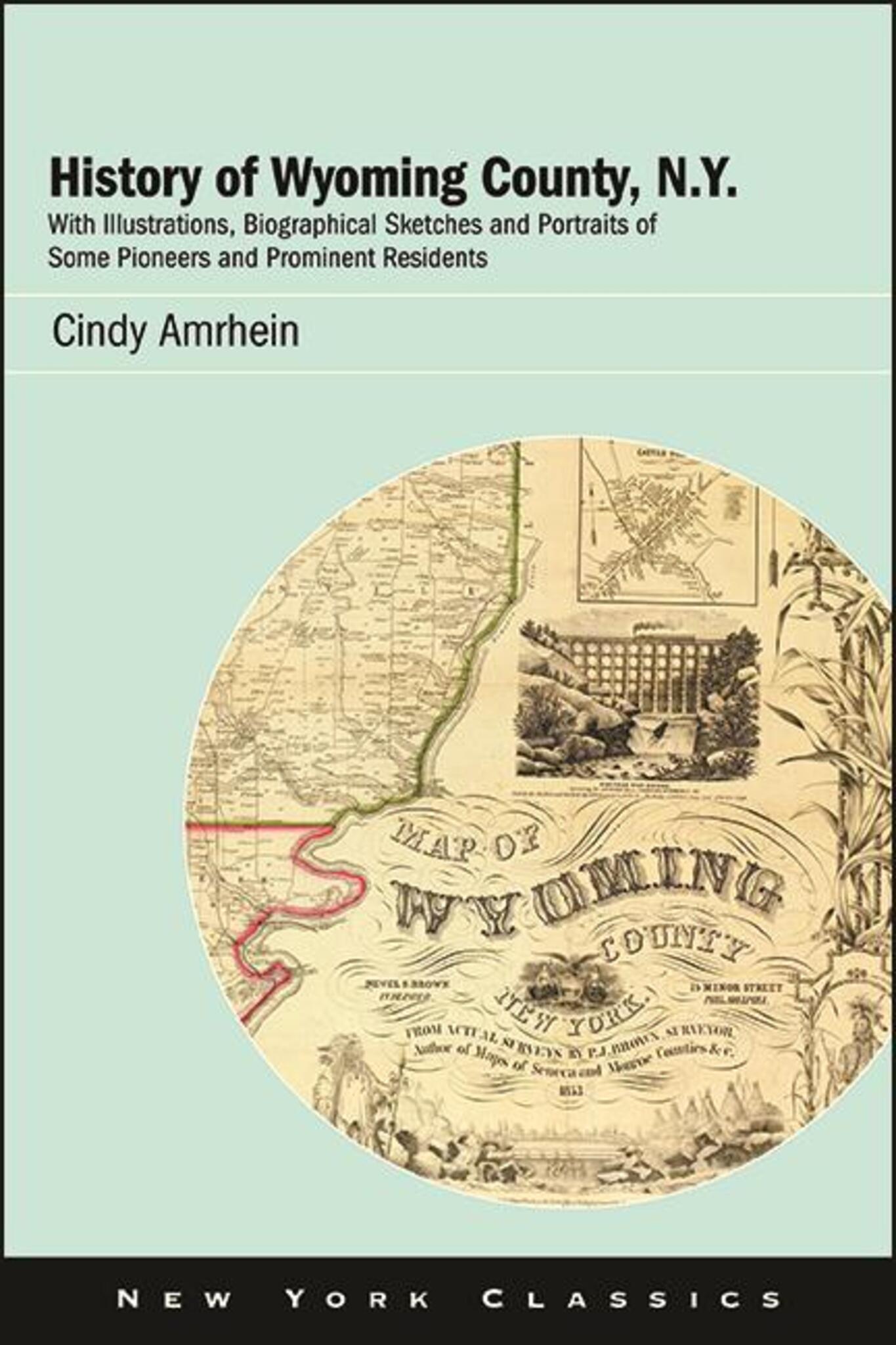We're sorry. An error has occurred
Please cancel or retry.
History of Wyoming County, N.Y.

Some error occured while loading the Quick View. Please close the Quick View and try reloading the page.
Couldn't load pickup availability
- Format:
-
02 January 2023

A county history book that includes town histories, biographical sketches, and lithographs of pioneers and homesteads, as well as their Civil War military service.
Originally published by F.W. Beers & Company in 1880, History of Wyoming County, N.Y. is still one of the most referenced histories of the county. Exploring Wyoming County pre-formation, the book also delves into the history of sixteen towns and their prominent residents and records residents' Civil War service.
Officially named a county in 1841, this southwestern farming county of New York State is the home of several New York landmarks, including Letchworth State Park, Middlebury Academy (listed on the National Register of Historic Places), and Attica Prison. Notable Wyoming County residents have included Josiah Andrews (an abolitionist newspaper owner), Mary Jemison (the "White Woman of the Genesee" who lived among the Seneca), Barber Conable (former President of the World Bank Group and US Congressman from New York), Chester A. Arthur (the twenty-first President of the United States), Ella Hawley Crossett (former President of the New York State Woman Suffrage Association), Lemuel M. Wiles (American landscape painter), and Charlotte Smallwood-Cook (the first woman elected district attorney in New York State). Newly released by SUNY Press with an introduction by Cindy Amrhein, Wyoming County Historian, History of Wyoming County, N.Y. offers a fascinating and comprehensive reference work that is useful to family and local historians, genealogists, and those interested in the development and history of New York State.


New Introduction
Part I: State History
1. The American Aborigines—Characteristics and Customs of the Five Nations of New York
2. Exploration and Settlement of the Atlantic Coast and the Hudson River
3. The Dutch Regime in New York—Rival Claims of the English—The Latter Prevail
4. French and Indian Wars—Dissensions in the Colonial Government—Execution of Leisler
5. Count Frontenac's Campaign—Piracy—Misgovernment of New York—French Frontier Posts
6. The Alleged Plot to Burn New York City—French and Indian Hostilities—The Contest for the Ohio Valley
7. The Result of Four English Expeditions against the French—Montcalm's Successful Campaign
8. The Extinction of French Power in America—The New York Judiciary—The New Hampshire Grants
9. Approach of the Revolution—New York's Patriotic Attitude—The First Battle Fought in 1770
10. Landing Tea Prevented—Congressional Action—The Battle of Lexington—Canada Invaded
11. Hostilities transferred to New York—The Battle of Long Island—Burgoyne's Campaign
12. The Battle of Bennington—Failure of St. Leger's Movement—Burgoyne's Defeat and Surrender
13. Clinton's Hudson River Campaign—France Recognizes the United States—Wars with the Indians
14. Arnold's Treason—Close of the Revolution—Adoption of the Constitution—Internal Improvements
15. Causes of the Last War with Great Britain—Expeditions against Canada—Border Hostilities
16. The Erie Canal and Railroad—The State Administration—New York in the Civil War
Part II: General County History
1. Relics and Theories of the Earliest Inhabitants of Western New York
2. Numbers and Location of the Senecas—Their Religious Beliefs
3. The "White Woman," Dehewannis or Mary Jemison—Her Family and Possessions
4. The Notorious "lndian Allen"—Prominent Characters among the Senecas
5. The Title to the Soil of Western New York—Phelps & Gorham's Purchase—Morris's Reserve
6. The Holland Purchase and Purchasers—Policy of the Holland Land Company
7. Relations between the Holland Company and the Settlers—Land Office Wars
8. Pioneers from New England—How they Came, Settled and Thrived
9. The Condition of the Pioneers—Their Ways and Means of Living
10. Early Schools—The Origin of Teachers' Institutes—Character of the Pioneers
11. Organization and Subdivison of Wyoming County—Construction of County Buildings
12. Lists of the County Officers and Legislative Representatives of Wyoming County
13. The Construction and Opening of Railroads in Wyoming County
14. Wyoming County Bible Society, Agricultural Society and Insurance Company
15. Origin and Early Incidents of the Civil War—Patriotic Spirit in Wyoming County
16. Histories of the 21st and 27th New York Infantry
17. The Noble Record of the 17th New York Infantry—The Death of Charles E. Bills
18. 5th New York Cavalry or "First Ira Harris Guard"—Ellsworth's Avengers
19. History of the 104th New York Infantry
20. The 24th Independent Battery—A Glimpse at the Horrors of Andersonville
21. History of the 9th New York Cavalry and 4th Artillery
22. A Hard Year's Fighting by the 8th New York Heavy Artillery
23. History of the 130th volunteers or 1st New York Dragoons
24. History of the 136th New York Infantry
25. History of the "Governor's Guard," or 2nd Mounted Rifles
26. The History of Political Opinion and Party Fortunes in Wyoming County
27. Wyoming County Congregational Conferences, Sunday-School Teachers' Association and Bible Society—Temperance Reform—Medical Society—Harmonic Association
28. The Letchworth Rifles—Action During the Railroad Riots—Victories in Shooting Matches
29. The Wyoming Historical Pioneer Association and its Log Cabin Museum
30. A Geological Sketch of Wyoming County
Part III: Town and Village Histories
Part IV: Biographies
Part V: Portraits



